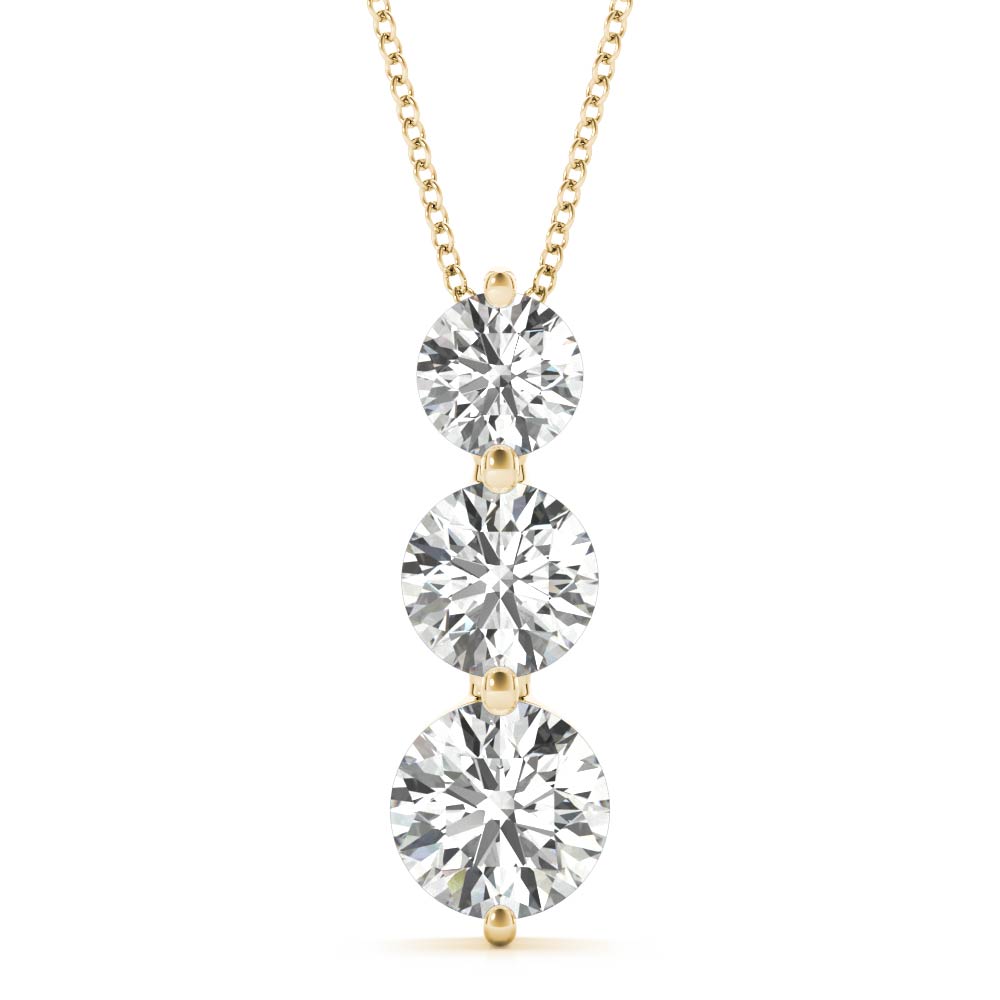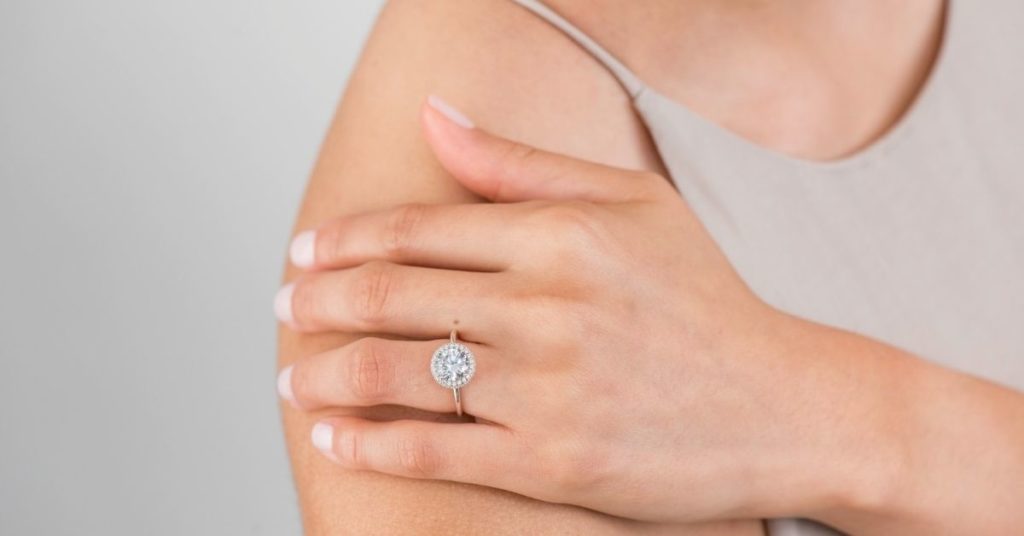How do lab-grown diamond testers work? Purchasing lab-grown diamonds can be quite daunting. From the get-go, you may be plagued with questions regarding whether you should purchase lab-grown diamonds or earth-mined diamonds. What even is the difference between the two and, God forbid, what happens if you get swindled and accidentally purchase diamond simulants not realizing they are fake diamonds.
Luckily, there are several diamond testers that you can utilize to have confidence in your purchase? Not sure what a diamond tester is? Don’t worry, we’ve got you covered. But first, let’s discuss what exactly a lab-created diamond is.

What Are Lab-Created Diamonds?
Lab-grown diamonds are simply diamonds that are formed in a laboratory as opposed to the earth’s crust. There are two ways to create a lab-grown diamond:
The CVD Method
The CVD (aka chemical vapor deposition) method is a method in which lab-grown diamonds are created by utilizing a vacuum chamber to imitate how diamonds form in incredibly hot gas clouds. The pure carbon diamond seed is placed in a chamber and once a high temperature is reached the diamond seed releases carbon which creates the lab-grown diamond we know and love.
The HPHT Method
Instead of simulating the cosmos, the HPHT method creates HPHT diamonds that are normally found deep within the earth. Like CVD, this method utilizes heat and high pressure, resulting in lab diamonds with a fiery sparkle.
Are Lab Grown Diamonds Different from Mined Diamonds?

A lab diamond and a real diamond are both diamonds. Lab-grown diamonds and natural diamonds are chemically identical; that is, they have the same chemical makeup. The only difference between a mined diamond and a lab diamond is that the lab diamond is created without contributing to the many environmental issues pervading mined diamonds. Want to get an even more in-depth comparison? Check out our page, here.
What Is a Diamond Tester?

A diamond test is a portable tool that indicates if an object in diamonds is genuine. This device is simple and compact so you can easily carry them with you at the store. The diamond testers show a number of scales from 1 to 8, which indicates the authenticity of the diamond by color. The majority of the lights have audible alarms that increase in frequency after the detection of real diamonds.
Most natural diamond testers work by measuring the electrical conductivity of what you’re testing and comparing it with the known conductivity of natural diamonds or moissanite (which will also test positive). This is fine for natural diamonds, but lab-grown diamonds have the same chemical properties as their natural counterparts and so will test just like them.
The only way to distinguish between them is to look at their structure and composition using special techniques like spectroscopy. Luckily, there are plenty of tools out there that can do this for you, including special diamond testers with interchangeable heads (which allow you to test for more than one type of material) and laser inscription readers.
The thermal conductivity of a diamond is about 2.5 times that of an average gemstone and about 6.5 times that of Moissanite. Diamond testers measure how well the stone conducts heat and will not always be accurate when testing other gemstones.
Shopping for Diamond Testers
If you’re shopping for diamonds, it’s important to know what testers can do to protect yourself during the buying process.
The good news is that there are some pretty high-quality testers on the market today. If you find one with a good reputation, it’s unlikely that it will give you any false readings.
The bad news is that not all testers are equal. Some can be inaccurate when testing certain types of stones. Always check your tester against a known diamond before testing an unknown gemstone.
Can a Diamond Tester Accurately Check for Fake Diamonds or Cubic Zirconia?
Yep! Both fake diamonds and cubic zirconia do not have high enough thermal conductivity to pass the diamond tester.

Are There Any Diamond Imposters that Could Pass the Diamond Tester?
It’s important to keep in mind that these devices are not 100% accurate because some other stones do not show any resistance either — moissanite and white sapphires are examples of this problem. More advanced instruments using infrared radiation can help distinguish between different types of stones with similar thermal properties, but they’re more expensive than basic testers that only check electrical conductivity.
How Do Specific Diamond Testers Work?

The two most popular types of diamond testers are thermal testers and electrical conductivity testers. Both measure a property that is unique to diamonds. Diamond testers can be highly reliable, but like all instruments, they require proper usage and maintenance.
Thermal Diamond Tester
As described above, a thermal tester works by measuring the difference between the conductive properties of a diamond and a non-diamond. A thermal probe heats up for about ten seconds and then presses against the stone. If the stone is a diamond, it will take longer for heat from the probe to dissipate into it than if it were a non-diamond gemstone. The tester will display either a positive reading (for diamond) or negative reading (non-diamond).
This method relies on two devices: the heating element (the thermal probe), and the temperature sensor (the part that measures the rate of heat dissipation) to determine if the stone is indeed a fake diamond or a real diamond.
Electrical Conductivity Diamond Tester
Real diamonds have excellent electrical conductivity. While they could test the authenticity of a diamond, they are not enough to identify a real gemstone. The electrical conductivity diamond tester can do this with a small probe connected to a small electrode. A real diamond will glow when the probe touches it. This is an indication of its authenticity. If it does not glow, then it is likely that it is fake.

Will Diamond Testers Work On Rubies or Other Gemstones?
Typically, no. Diamond testers are only suitable for testing diamonds and/or moissanite.
The only other stone that can be tested with a diamond tester is moissanite. Moissanite is a man-made stone that is very similar to diamonds in both appearance and properties. Diamond testers will typically test positive for diamonds or moissanite, but a few newer models can detect moissanite as well as lab-grown diamonds and natural diamonds. If you want to be certain about the results when testing for moissanite, consult your manual first or contact the manufacturer of your tester to make sure your device is fully compatible.
What to Look for When Buying a Real Diamond Tester?
When buying diamond testers, it’s important to consider several factors.
Usability
Is the diamond tester easily usable and comfortable to use? If you are in the market for buying multiple lab-grown diamonds or mined diamonds (again, both actually are real diamonds) then you want to invest in a diamond tester that can stand the test of time while maintaining your lab diamonds’ usability.
Metal Detection
Some Diamond Detecting Devices have metal detection features that will alert you when an accidental touch has happened on the diamond. When a jeweler is using larger stones, the work is difficult to get them right. A faulty analysis of a nearby metal can give the impression there is actually a diamond.
Magnification
Several diamond tests have a magnifying lens to allow a more thorough inspection of diamonds. There are more blemishes and anomalies, which may be detrimental to the value. These attributes include inclusion on a diamond’s inside, feathered wisps, or scratches on its surface. Increased magnification is a useful tool to have on your tester to further ensure you’re not dealing with a fake diamond.
Electrical Conductivity
A conductive electrical diamond tester gives an accurate measurement of any part of the diamond. This relates particularly to the differentiation from moissanite, which heat diamond testers can’t distinguish easily. Consider buying a tester that utilizes electrical conductivity as it can help you more intimately determine diamond simulants from real diamonds.
Thermal Conductivity
Diamond testers can identify diamonds using thermal conductivity through the use of two sensors: one for heat transfer, and one for temperature. Using these two sensors in tandem enables thermal diamond testers to less effectively identify diamonds. They measure the time it takes for heat to transfer through a stone and the temperature change that results. Ensuring that you have an accurate sense of thermal conductivity in your tester is absolutely necessary for success.
Diamond Testers Provide Peace of Mind

Ultimately, one must be careful when purchasing lab diamonds or mined diamonds. There is a lot of misinformation out there. A lot of people looking to pull the fleece over well-intentioned consumers.
It is important to have faith in your jeweler. When possible purchase your diamond from reputable jewelers that can provide the history and credit of the diamond in question.
Clean Origin is one of those jewelers. Our lab diamonds are 100% ethical, 100% real, and to top it all off, we are 100% there for you. From precious metals to sparkling diamonds. Plus we offer free resizing and a 100 Day Return Policy. You can rest easy knowing that your lab diamonds are real, ethical, and beautiful.



